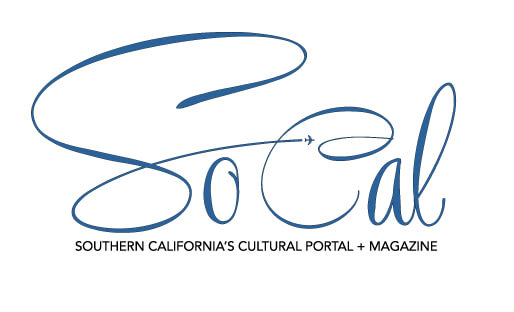
How Your Workwear Reflects Your Leadership Style

Photo by Nimble Made
In Southern California’s laid-back yet sophisticated business culture, style speaks volumes before a word is ever said. Far beyond mere fabric, your professional attire serves as an eloquent medium for articulating your leadership identity. The garments you select for the workplace convey nuanced yet potent messages about your authority, values, and approach to governance. Whether donning a meticulously tailored suit or embracing refined business casual, your workwear shapes perceptions of your leadership ethos. This discourse elucidates how sartorial choices mirror your command style and provides discerning strategies to harmonize your wardrobe with your professional persona—especially within the distinctive, sun-soaked context of Southern California’s unique fashion sensibility.
Why Workwear Matters in Leadership
In professional arenas, attire transcends aesthetics, emerging as a pivotal communicator of your leadership stature. As the initial point of contact for colleagues, clients, and subordinates, your clothing profoundly influences first impressions, often before a single word is uttered. Research underscores that judgments regarding competence, integrity, and authority coalesce within moments, with attire serving as a linchpin in this rapid assessment.
Leaders are tasked with inspiring trust and establishing the organizational tone. Your sartorial selections can amplify your gravitas, reflect adaptability, or underscore alignment with corporate ethos. A chief executive in a bespoke suit may exude resolute tradition, while a startup visionary in a polished yet relaxed ensemble might radiate innovation. By curating your wardrobe with intention, you ensure your appearance resonates with the leadership qualities you seek to project.
The Psychology of Appearance
The phenomenon of “enclothed cognition” posits that attire not only shapes external perceptions but also modulates your internal state and performance. Donning sophisticated, professional garments can elevate confidence and sharpen focus, thereby enhancing your efficacy as a leader. Conversely, attire incongruent with your role or milieu may engender unease, diminishing your authoritative presence.
For instance, excessively casual garb in a formal corporate setting might inadvertently suggest a lack of gravitas, while overly rigid attire in a creative industry could project inflexibility. Achieving equilibrium demands a nuanced understanding of your workplace culture, audience, and the narrative you wish to convey through your appearance.
How Different Leadership Styles Are Reflected in Workwear
Each leader possesses a distinctive style, and attire serves as a canvas to amplify this individuality. Below, we explore how varied leadership paradigms manifest through sartorial choices, offering insights into leveraging your wardrobe to reinforce your professional identity.
The Authoritative Leader: Power Dressing
Authoritative leaders, who champion structure and decisiveness, gravitate toward the timeless art of power dressing. Impeccably tailored suits, pristine dress shirts, and polished oxfords project an aura of command and assurance. Such attire signals unyielding control and garners deference in high-stakes environments.
For women, power dressing might manifest as a sharply contoured blazer paired with a pencil skirt or a sleek sheath dress, complemented by elegant heels. Men may favor a bespoke suit in muted tones such as navy or charcoal, accented by a striking tie. Discreet accessories—a refined timepiece or subtle cufflinks—lend sophistication without ostentation. To infuse individuality, authoritative leaders might select a seasonal scent, its crisp notes enhancing their commanding presence with understated allure.
The Collaborative Leader: Approachable Attire
Collaborative leaders, who prioritize inclusivity and dialogue, favor attire that balances approachability with professionalism. Business casual ensembles—such as tailored chinos with a lightweight blazer or a refined dress layered with a cardigan—cultivate an inviting yet authoritative demeanor.
Soft hues, such as pastels or earthy tones, foster warmth, while layered pieces like a delicate scarf or textured knit add dimension without sacrificing accessibility. Footwear, such as loafers or sleek ankle boots, maintains polish while eschewing excessive formality. The objective is to eschew intimidating rigidity, ensuring colleagues feel at ease. Yet, overly casual choices, such as distressed denim, risk undermining credibility, necessitating a judicious balance.
The Visionary Leader: Creative and Bold Choices
Visionary leaders, often at the helm of innovative enterprises, wield attire as a testament to their originality. Unafraid to challenge conventions, they embrace vibrant hues, distinctive patterns, or avant-garde silhouettes. A tech entrepreneur might pair a bold blazer with tailored trousers, while a creative director could command attention in a statement dress adorned with geometric accents.
The art lies in tempering creativity with professionalism. A vivid suit demands impeccable tailoring and restrained accompaniments to avoid theatricality. Statement accessories—a sculptural handbag or modern eyewear—elevate the ensemble while preserving equilibrium. By integrating contemporary elements, such as sustainable materials or minimalist designs, visionary leaders underscore their forward-thinking ethos, inspiring others to embrace innovation.
Tips for Aligning Your Workwear with Your Leadership Style
Having delineated how leadership styles manifest sartorially, we now offer pragmatic counsel for crafting a wardrobe that mirrors your unique leadership paradigm.
Understand Your Workplace Culture
A foundational step is discerning your organizational milieu. Whether navigating a formal corporate landscape or a dynamic startup, your attire should subtly elevate the norm without alienating peers. In a business casual office, a structured blazer or elegant dress can distinguish you as a leader while maintaining cohesion.
Observe the sartorial cues of senior colleagues, using their style as a guide rather than a template. Infuse your wardrobe with personal flourishes to assert individuality while aligning with the broader cultural context, ensuring you remain both authoritative and relatable.
Invest in Quality Over Quantity
Superior attire endures, fits flawlessly, and exudes refinement. Prioritize timeless staples—a bespoke blazer, versatile trousers, or a classic dress shirt—over fleeting trends. These foundational pieces afford flexibility, seamlessly adapting to diverse professional scenarios.
Opt for natural fibers, such as wool, cotton, or silk, which offer breathability and resilience. Impeccable fit is paramount; ill-fitting garments erode professional credibility. Engage a skilled tailor to ensure your wardrobe is meticulously customized, enhancing your poised presence.
Incorporate Personal Touches
Your attire should reflect your essence while adhering to professional decorum. Subtle accents—a monogrammed cufflink, a vibrant scarf, or a distinctive lapel pin—imbue your ensemble with character, fostering memorable connections. These details distinguish you without overshadowing your authority.
A collaborative leader might select a watch with an engraved leather strap, while a visionary could opt for a tie with an intricate, artistic motif. Restraint is key; such elements should enhance, not dominate, your overall presentation, ensuring a cohesive and polished image.
Dress for the Occasion
Leadership demands sartorial versatility, accommodating contexts from boardroom deliberations to informal team gatherings. A capsule wardrobe, comprising interchangeable pieces, facilitates seamless transitions. A navy blazer, for instance, pairs effortlessly with dress trousers for formal engagements or jeans for casual settings.
Similarly, a wrap dress can be elevated with heels and bold jewelry or tempered with flats and a denim jacket. Such adaptability ensures you consistently project an image aligned with the occasion, reinforcing your leadership versatility.
Maintain Consistency
Sartorial consistency underscores your reliability as a leader. While stylistic exploration is valuable, abrupt shifts—such as transitioning from tailored suits to athleisure—may disconcert colleagues and dilute your professional image. Gradual evolution preserves credibility while refreshing your aesthetic.
Introduce subtle changes, such as forgoing a tie or incorporating a textured sweater. This measured approach ensures your workwear evolves in harmony with your established leadership persona, reinforcing trust and authority.

ABOUT THE AUTHOR
Thea Payne is a passionate writer specializing in lifestyle topics. With a keen eye for trends and a love for storytelling, she crafts engaging content on style, wellness, travel, and personal growth. Thea’s work inspires readers to live intentionally and embrace everyday moments with joy.”
